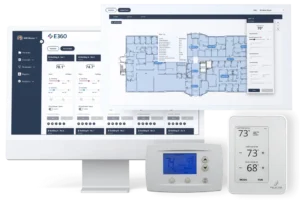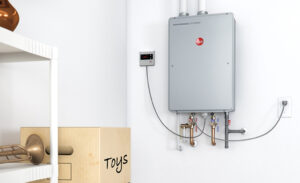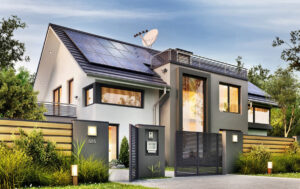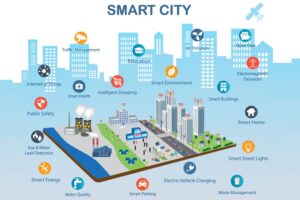Gardening is an art, a science, and a deeply satisfying endeavor that brings us closer to nature. As homeowners and enthusiasts strive to create lush, green, and inviting outdoor spaces, they face an age-old dilemma: should they plant seeds and let nature take its course, or should they focus on landscaping to create an immediately impressive scene? While both approaches have their merits, choosing between seeds and landscaping depends on several factors, such as budget, time, the desired aesthetic, and the level of long-term commitment one is willing to make.
This article delves into the pros and cons of seeds versus landscaping, helping you determine which method is best suited for your outdoor vision and gardening goals.
The Power of Seeds: Natural Growth and Customization
Planting seeds is often considered the most organic and rewarding approach to gardening. For many, the act of nurturing a plant from its tiny seed to a fully grown, thriving specimen is a journey of patience, dedication, and a deeper connection to nature.
Advantages of Using Seeds:
-
Cost-Effectiveness: One of the most significant advantages of planting seeds is cost. Seeds are generally much cheaper than purchasing fully grown plants, trees, or flowers. A packet of seeds can often cover a large area, making them a budget-friendly choice for gardeners looking to fill vast spaces without breaking the bank.
-
Variety and Customization: With seeds, gardeners have the freedom to select from an endless variety of plants, flowers, and vegetables. This allows for a highly personalized garden that reflects individual preferences. Whether you’re looking to create a vibrant flower bed, a vegetable patch, or an ornamental lawn, planting seeds opens the door to countless possibilities.
-
Long-Term Investment: Although planting seeds requires patience, it rewards gardeners with long-term growth. By nurturing seeds over time, you can cultivate a garden that becomes more beautiful and resilient as it matures. Established plants grown from seeds often develop deeper root systems, which can make them more drought-tolerant and less prone to disease.
-
Sustainability and Environmental Impact: Growing plants from seeds is inherently more sustainable than landscaping with pre-grown plants. Seeds require less energy to produce, and growing your own plants reduces the carbon footprint associated with transporting fully grown plants across vast distances. Additionally, gardeners who grow from seed can often avoid using harmful pesticides, creating a more eco-friendly garden.
Challenges of Planting Seeds:
-
Time and Patience: Growing from seeds requires a considerable investment of time. Seeds take longer to germinate and reach full maturity, which means that you won’t see instant results. For those who are eager to create an immediate impact, this slow progression may feel frustrating.
-
Vulnerability: Seedlings are delicate and vulnerable to pests, diseases, and environmental stress. They may require constant monitoring and protection, especially during their early stages. In regions with extreme weather conditions, seeds may fail to thrive without additional care, such as climate control or protective covers.
-
Initial Maintenance: While seeds are relatively easy to sow, they require consistent maintenance, including watering, fertilizing, and thinning. Without these necessary steps, seedlings may not develop properly, leading to patchy or underwhelming growth.
Landscaping: Immediate Impact and Structure
Landscaping, on the other hand, involves the design and modification of an outdoor space, often by incorporating plants, trees, hardscaping elements (such as paths, patios, and walls), and features like water fountains or sculptures. Landscaping is a more structured approach that focuses on creating an aesthetic vision that is immediately apparent and visually striking.
Advantages of Landscaping:
-
Instant Gratification: One of the most alluring aspects of landscaping is the immediate impact it provides. By planting mature shrubs, trees, and flowers, or installing ready-made features, you can transform an outdoor space quickly. For homeowners looking to enhance their curb appeal or create an inviting backyard for immediate use, landscaping offers a quick turnaround.
-
Professional Expertise: Landscaping often benefits from the expertise of professional landscapers who can assess your space and suggest the best plants, layouts, and features to maximize beauty and function. With their knowledge of soil types, sunlight exposure, and plant compatibility, these experts can help design a space that thrives with minimal ongoing effort.
-
Defined Aesthetic: Landscaping allows for a high level of control over the look and feel of a garden. Whether you’re aiming for a formal, symmetrical garden or a naturalistic, cottage-style layout, landscaping lets you create a well-defined aesthetic that reflects your vision. The use of hardscaping elements, such as stone paths, fountains, or retaining walls, further enhances the design and creates a cohesive look.
-
Lower Maintenance in Some Cases: Once landscaping is completed, it can require less maintenance in the short term. Large, established plants, trees, and shrubs tend to require less attention than younger seedlings. Additionally, the installation of features like irrigation systems or mulch can reduce the need for constant watering or weeding.
Challenges of Landscaping:
-
Higher Initial Cost: The primary downside of landscaping is the cost. Buying mature plants, trees, and materials for hardscaping can be expensive. If you hire a professional landscaper, labor costs can add to the expense. For those on a tight budget, landscaping may feel like an impractical solution.
-
Limited Flexibility: Once landscaping is completed, it’s harder to change or update the design without incurring additional costs. Adding or removing plants, shifting features, or altering layouts can be labor-intensive and may disrupt the overall harmony of the space.
-
Environmental Considerations: Landscaping with non-native or water-hungry plants can lead to ecological issues. In some regions, the introduction of foreign species may harm local ecosystems, while using excessive water for irrigation can strain local water resources.
Striking the Right Balance: Blending Seeds and Landscaping
For many gardeners, the best solution lies in blending the benefits of both seeds and landscaping. By combining the instant impact of landscaping with the long-term rewards of growing from seeds, it’s possible to create an outdoor space that’s both beautiful and sustainable.
For example, you might begin by landscaping your yard with mature trees or shrubs to provide structure and create an immediate visual impact. Meanwhile, you can plant seeds for flowers, herbs, or vegetables, gradually adding layers of color, texture, and variety to your garden over time. As your seeds mature, the garden will become more dynamic and full of life, evolving from a carefully curated space to one that reflects the growth and change of nature.
Incorporating elements like raised beds, native plants, and sustainable landscaping practices ensures that your garden remains both beautiful and eco-friendly, with the best of both worlds.
Conclusion: Seeds or Landscaping?
Ultimately, whether you choose to plant seeds or pursue landscaping will depend on your specific needs and gardening goals. If you’re looking for a cost-effective, sustainable approach that rewards patience and offers endless variety, planting seeds may be your best option. However, if you desire immediate results, a professional aesthetic, and a more defined layout, landscaping provides the structure and instant gratification you need.
Whichever path you choose, gardening is about creating a space that brings joy, beauty, and tranquility to your outdoor life. With thoughtful planning and consideration, you can design a garden that harmonizes with your home, your lifestyle, and the environment.
















